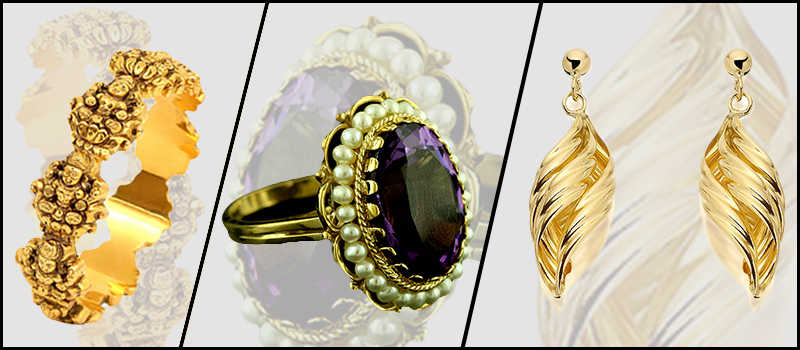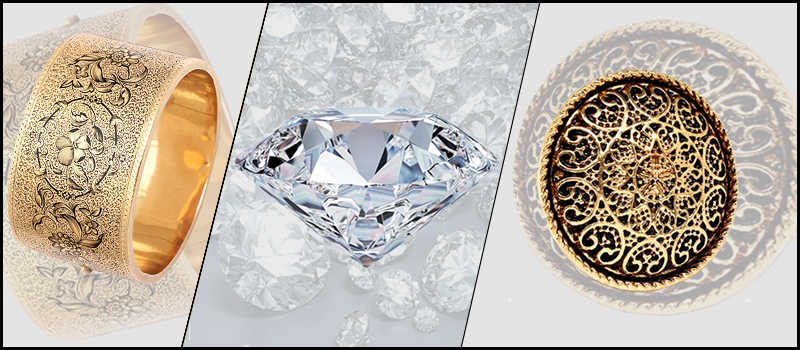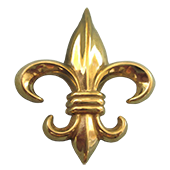Tips To Value Antique Gold And Fine Jewelry
- Posted on 30th November 2020
- in Antique Jewelry
- by Alan
Valuing antique gold and fine jewelry can be difficult- marks can vary based on age and how can you tell if a stone is a real diamond or not? When you are looking to sell your family heirloom jewelry, you want to make sure you are getting a fair price from a dealer. Here are some tips to help you tell the real value of your antique gold pieces.

How to value antique jewelry
To calculate the value of jewelry (gold) you need 3 pieces of information. These are the karat and the weight of the gold, and the price per gram. This price is daily published US$ per ounce.
1. The term KARAT refers to the fineness of gold. The word CARAT refers to a weight, generally for gemstones. The number refers to the fineness of gold in parts per 1000.
There are many karats. The most common are 14K, 18K, and 24K. 1 karat gold is 1 part in 24 of the gold, this is a measure of the purity of the gold compared to filler metals:
14ct is 14 parts in 24 gold
(If you multiply 14/24 by 1000 you get .585 gold, another mark you might see.)
18ct or 750 (parts per 1000) or 75% gold
24ct or 1000 (parts per 1000) or PURE gold
Gold can come in various colors, depending on the other metals used with it. The color does not influence the value, but price can vary depending on current trends yellow may be less or more valuable than white gold, and rose and other fashion colors are often but not always less valuable. However, the amount of pure gold is dependent on the marks not the color.
2. All gold jewelry is clearly stamped to showcase the authenticity.
When looking at hallmarks or stamps , certain marks should not be on fine antique jewelry. EP (Electroplate,) GP (Gold Plate), or HGP (hard gold plate) are names that show it is not solid gold. Also avoid numbers like 800, 925, 950, which are all silver marks and would indicate an inauthentic piece.
3. Calculating a current price based on weight.
The weight is generally quoted in grams. Troy Ounce, is used for precious metals and equals to 31.103 grams. If you divide the price of gold by 31.103 you can get the price for 1 gram of pure gold in US dollars. The number of the percentage gold (see above) multiplied by the weight in grams give the weight of pure gold. Multiply it by the price of gold and you have the current gold value of the item. This is a running market value and will not be the same price offered by a dealer.
Gold Jewelry with Precious Gems
In this case it vital to find an appraiser who is trained and certified. Market value is an estimation of what the item might sell for given the style, design, desirability and is nearly impossible to do for a layman. A main reason for this is that it is hard to grade a diamond when it is already set.

How to tell if a diamond is real
Though there are many ways to value a diamond’s authenticity in theory, the following are all subject to various problems. At the end, you will find out the only way that a professional will judge if a diamond is real or not. If a dealer uses any of the following ‘tests’ you should find another antiques dealer who uses the correct method.
1. The scratch test.
Diamonds are the hardest minerals. So the easiest way to spot fake diamonds is by simply scratching the loose stone against a mirror to test its hardness. This scratch test proves usually inaccurate. In Mohs scale glass is rated at 5.5, and diamonds at 10. So, genuine diamonds will scratch a glass mirror. But so will moissanite, quartz (at 7), and cubic zirconia (at 8). Further, this test only checks loose stones, not ones set in jewelry.
2. Use a magnifying glass.
If you have a magnifying glass or loupe (a 10x jeweler’s magnifying glass) and a genuine diamond along with the loose stone to test a comparison can be made. Fake diamonds, will look too perfect when examined with the loupe. All diamonds have their inclusions, and even some internal quirks. Most fake diamonds are specially created to look totally perfect, and look totally different with a loupe than a natural diamond. This test is accurate when done by a dealer, however they are really unable to show you proof, so they can state that a stone is a faux diamond to pay less money for your piece.
3. The fog test.
Try to create a “fog” around the stone by blowing on it. Diamonds do not retain heat well. They will not get “foggy” even if you blow on them with hot air. On the contrary other stones will easily get a fog that then goes away, just like a glass mirror or window.
4. Adiamor diamond fluorescence chart.
This test is also not very reliable, although many diamonds will glow blue under UV light, most home UV lights are not strong enough to accurately perform this test.
5. The transparency test.
A real diamond refracts light so much that it is impossible to see through it. Try to ready a piece of printed paper with the loose diamond on top of it. If the stone is a diamond decently cut, it should sparkle so much that you cannot see through it to read the words on the paper. With cubic zirconia stones you should be able to see right through. Again, this test is not reliable as it tests loose stones not set stones in jewelry.
How The Professionals Test Diamonds
Diamonds can conduct electricity. On the other hand moissanite, which can prove very difficult to tell apart from a genuine diamond, will not conduct electricity with as much strength as a diamond. Nowadays any quality dealer will have an electricity measurement tool on hand to perform a conductivity test and determine a diamond’s authenticity.
